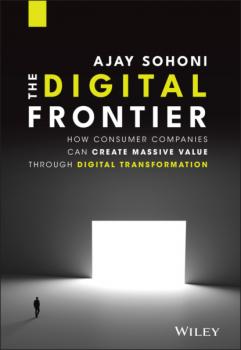John Wiley & Sons Limited
Все книги издательства John Wiley & Sons LimitedSeismic Reservoir Modeling
Seismic reservoir characterization aims to build 3-dimensional models of rock and fluid properties, including elastic and petrophysical variables, to describe and monitor the state of the subsurface for hydrocarbon exploration and production and for CO₂ sequestration. Rock physics modeling and seismic wave propagation theory provide a set of physical equations to predict the seismic response of subsurface rocks based on their elastic and petrophysical properties. However, the rock and fluid properties are generally unknown and surface geophysical measurements are often the only available data to constrain reservoir models far away from well control. Therefore, reservoir properties are generally estimated from geophysical data as a solution of an inverse problem, by combining rock physics and seismic models with inverse theory and geostatistical methods, in the context of the geological modeling of the subsurface. A probabilistic approach to the inverse problem provides the probability distribution of rock and fluid properties given the measured geophysical data and allows quantifying the uncertainty of the predicted results. The reservoir characterization problem includes both discrete properties, such as facies or rock types, and continuous properties, such as porosity, mineral volumes, fluid saturations, seismic velocities and density. Seismic Reservoir Modeling: Theory, Examples and Algorithms presents the main concepts and methods of seismic reservoir characterization. The book presents an overview of rock physics models that link the petrophysical properties to the elastic properties in porous rocks and a review of the most common geostatistical methods to interpolate and simulate multiple realizations of subsurface properties conditioned on a limited number of direct and indirect measurements based on spatial correlation models. The core of the book focuses on Bayesian inverse methods for the prediction of elastic petrophysical properties from seismic data using analytical and numerical statistical methods. The authors present basic and advanced methodologies of the current state of the art in seismic reservoir characterization and illustrate them through expository examples as well as real data applications to hydrocarbon reservoirs and CO₂ sequestration studies.
The Digital Frontier
Discover how to move forward with your own company’s digital transformation with this accessible new resource from a global leader in his field In The Digital Frontier , experienced executive and distinguished author Ajay Sohoni delivers a relatable and readable reference for corporate executives who need the knowledge and confidence to build lasting digital change within their enterprise. From marketing to commercial, supply chain, and finance, the book offers actionable insights in an accessible format, full of anecdotes, humor, and case examples. You’ll learn which areas to focus on and which not to worry about as you craft your own custom transformation journey. In the book, you’ll also find: A demystification of the startup world for executives and an explanation of why unicorns exist (and so often ultimately fail) A detailed description of the digital transformation gripping companies across a variety of industries in functional areas including advertising, engagement, commerce, product development, manufacturing, and corporate functions A simplified 4-stage framework for companies to start from scratch and build valuable use cases Perfect for executives in consumer-facing companies, corporate managers and leaders, business unit heads and management teams, The Digital Frontier is also an indispensable guide for digital non-natives trying to make sense of, and keep up with, the rapidly changing world around them.
Essentials of Thermal Processing
ESSENTIALS OF THERMAL PROCESSING Explore this fully updated new edition of a practical reference on food preservation from two leading voices in the industry Among all food preservation methods in use today, thermal processing remains the single most important technique used in the industry. The newly revised Second Edition of Essentials of Thermal Processing delivers a thorough reference on the science and applications of the thermal processing of a wide variety of food products. The book offers readers essential information on the preservation of food products by heat, including high-acid foods and low-acid sterilized foods requiring a full botulinum cook.The accomplished authors—noted experts in their field—discuss all relevant manufacturing steps, from raw material microbiology through the various processing regimes, validation methods, packaging, incubation testing, and spoilage incidents.Two new chapters on temperature and heat distribution, as well as heat penetration of foods, are included. More worked and practical examples are found throughout the book as well. Readers will also benefit from the inclusion of:A thorough introduction to the microbiology of heat processed foods, food preservation techniques, low acid canned foods, and high acid foodsAn exploration of acidified products, heat extended shelf-life chilled foods, and processing methodsDiscussions of cooking and process optimization, process validation, and heat penetration and process calculationsAn examination of cooling and water treatment, how to handle process deviations, and packaging options for heat preserved foodsPerfect for professionals working in the food processing and preservation industries, Essentials of Thermal Processing will also earn a place in the libraries of anyone seeking a one-stop reference on the subject of thermal processing for food products.
Change
Transform your organization with speed and efficiency using this insightful new resource Incremental improvement is no longer sufficient in helping organizations navigate the complexity, uncertainty and volatility of today’s world. In Change: How Organizations Achieve Hard-to-Imagine Results in Uncertain and Volatile Times , authors John P. Kotter, Vanessa Akhtar, and Gaurav Gupta explore how to create non-linear, dramatic change in your organization. You’ll discover the emerging science of change that teaches us about how to build organizations – from businesses to governments – that change and adapt rapidly. In Change you’ll discover: Why the ability of organizations to deal with threats and take advantage of opportunities in the face of ever greater complexity and uncertainty is being severely challenged In-depth, evidence-based, actionable solutions for dealing with institutional resistance to change Case studies and success stories that describe organizations who have successfully built the ability to change quickly into their DNA A universal approach for how to dramatically improve outcomes from various change efforts, including: strategy execution, digital transformation, restructuring, and more Perfect for managers, executives, and leaders at companies of all types and sizes, Change will also prove to be a valuable asset to other professionals who serve these organizations. This book is for anyone seeking a proven approach for delivering fast, sustainable and comprehensive results.









